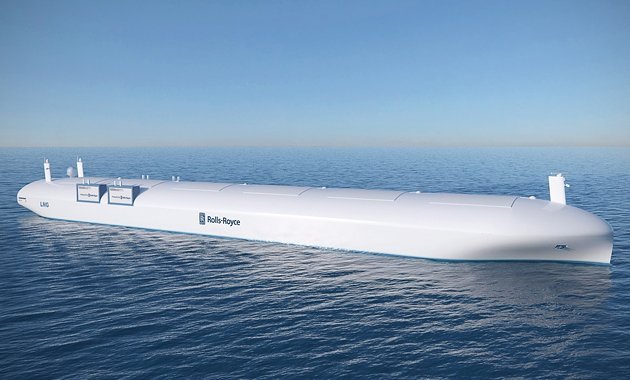The economics, timing and communications considerations of autonomous shipping

Andrew Sirkett provides punchy highlights from NSSLGlobal’s recent whitepaper
The idea of autonomous shipping is fascinating, but the issues of technology, safety and regulation are still very much unresolved. Although we may be about to see some rapid technological developments in ships and how they can be navigated remotely, the reality of sailing crewless vessels is yet to be properly defined.
NSSLGlobal’s latest whitepaper, ‘Autonomous/Drone shipping’, outlines its views and predictions on the requirements needed to make autonomous shipping a reality and the role of satellite communication systems in enabling crewless cargo vessels.
Remotely-controlled shipping could certainly provide a useful way for shipping companies to address their growing recruitment challenges by requiring fewer staff. Different aspects of ship operating and monitoring are already typically overseen remotely by shore based personnel, with a number of vessels being monitored simultaneously by one individual.
Given that we’re seeing the beginnings of traction, you might assume that drone ships would not be far from becoming a commercial reality. But, in fact they’re some way off.
Until existing maritime regulations are amended and new regulations are introduced, crewless vessels are likely to remain a purely experimental proposition for the next decade or so.
But, how cost-effective is a drone ship compared to a normal crewed vessel? This will be a critical factor in determining the future of commercial shipping.
While crew costs will never be entirely removed, a drone ship could drastically reduce staffing costs by reducing the need for rotating large groups of crew between service at sea and periods of leave. It is possible that crew rotation could be reduced to one quarter of what is currently required.
At the same time though, it can be assumed that other costs involved in operating a drone ship would actually be considerably higher. For instance, communication costs are likely to rise substantially.
In facilitating drone ships, it is inevitable that high volumes of data will have to be constantly transmitted and managed to and from vessel control centres. This communication will of course require suitable, cost-effective and efficient broadband-capable equipment to accommodate its transfer.
The monitoring and control data transmitted across these satellite links will have to be extremely comprehensive. Just some of the many sources on-board from where data must be collected, managed and forwarded ashore will be:
- Live multiple camera monitoring
- Navigation management computer monitoring and control
- Engine management and control
- Rudder control
- Radar scanning and avoidance
- Speed log/gyro heading monitoring
- Echo sounder depth scanning
- GPS and dynamic positioning systems.
In order to ensure that a ship remains under full control 100% of the time, the vessel will be required to have two, if not three, identical satcom systems installed to allow for redundancy. This will ensure that the automatic failover of data communications, in the event of a communications system failure, is quick and efficient.
Before drone shipping can become a reality, operators will need assurance that security measures are completely water tight and drone vessels prove to be non-hackable.
A key part of ensuring the security of satcom systems used to control drone ships will be to minimise the number of intermediary steps between the point-of-control and the vessel itself.
We can speculate that, as part of the legislation governing this sector, vessel operators will be required seek out satcom service providers with comprehensive security offerings, proven failsafe’s, and who own and operate as much of their own infrastructure as is possible.
Industry views on drone or autonomous shipping are certainly mixed. It’s a little early to ‘call’ how big drone shipping will be. The shipping community is generally conservative, and this will continue, despite how interesting it is to consider the potential for a small but growing sector of the world’s shipping being remotely navigated from port to port without personnel on board. A reluctance to embrace such technological advancement in ship navigation and control is can only be expected.
To downloand the full whitepaper, click here.
